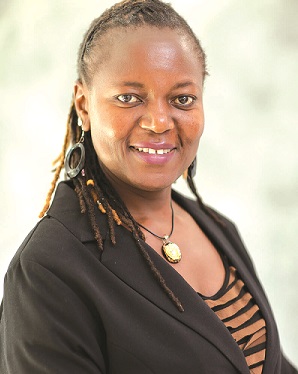
The Sunday Mail

Miriam Tose Majome
THE Zimbabwe Media Commission (ZMC)’s mandate to ensure that there is fair and wide access to information is intertwined with the other objective of encouraging the use and development of all the officially recognised languages in Zimbabwe.
The importance of language cannot be overemphasised because it is not just the lifeblood of communication but is also a whole way of life.
With 16 official languages, Zimbabwe holds the record for the country with the most official languages in the world.
The languages are Chewa, Chibarwe, English, Kalanga, Koisan, Nambya, Ndau, isiNdebele, Shangani, chiShona, Sign Language, Sotho, Tonga, Tswana, Venda and Xhosa. However, English remains the language of written record.
The situation is different for spoken languages, as reflected by the gradual acceptance, use and respect for local languages in the broadcast media.
Before independence, the Rhodesia Broadcasting Corporation’s Radio Two (now Radio Zimbabwe) was the only channel that played local music and used local languages.
Kwayedza was the first national newspaper printed in chiShona and isiNdebele in the mid-80s.
Speaking in local languages on radio and television was virtually unheard of and shunned, and even deemed embarrassing back then.
ZBC introduced Radio 3 (now Power FM) to cater exclusively for young upwardly mobile urbanites, and, needless to say, English was exclusively used on the station.
Radio Four (now National FM) came in the 1980s and complemented Radio 2 in the development of local languages and broadcasting in these languages.
On ZTV, the content was almost exclusively in English, save for a weekly music show on Thursdays called “Mvengemvenge” and local dramas on Monday evenings.
The first local content TV shows were well-received because it was a refreshing novelty to hear Shona and Ndebele spoken freely on television.
People who pioneered the acceptance and respect of local content in the mainstream media include luminaries like Aaron Chiundura Moyo, Alson Mfiri, Alice Mutema, Mbuya Mlambo, Stembeni Makawa and even the claypot head character Potonjere.
Many other pioneers of local media content have been forgotten in the annals of history.
News in chiShona and isiNdebele started airing on television during those years.
Previously, the only local language newscasts had been on Radio 2.
The inclusion of Sign Language interpreters on news broadcasts was another positive development.
In the 2000s, the media landscape had changed and so, too, had the audience.
With a growing ghetto-cum-rural youth population, it was no longer sustainable for television and radio to remain exclusively English and American.
Young local artistes were growing in numbers but were shut out of the mainstream media in preference for Western content.
Things had to change.
In 2002, Government — through the Ministry of Information — introduced an ambitious, albeit controversial, policy to reserve 75 percent of public media airtime to local content.
It was increased to 100 percent a year later.
The policy was loathed and misunderstood because the entertainment palate of the general populace back then was still mostly accustomed to Western music and film tastes.
Some resisted the policy, arguing that Government was trying to take the country “back to the Dark Ages”.
Many found it unbearable listening to nothing but local content because people were not yet accustomed to it.
To be fair, there was not much of it in terms of content and quality.
However, with time, local artistes have improved.
They would not have improved had they not been given that opportunity.
Many people now relate to local music and the country is producing an increasing number of artistes who can hold their own on the international stage.
More local content on radio and television caused a chain reaction that inevitably led to the increased use of local languages in the media.
The 14 community radio stations that are currently broadcasting speak to people in their own language, as do the 10 commercial radio stations and the six free-to-air television stations, and the many more unregistered channels beaming on the internet.
There has been an amazing revolution in the use and acceptance of local languages on radio and television.
Things have changed so much that in some media and public settings Western music and speaking in English now sounds out of place and foreign.
Miriam Tose Majome is a commissioner of the Zimbabwe Media Commission.



